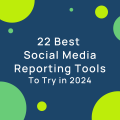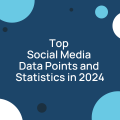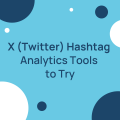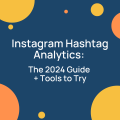We are lucky to be living in these amazing times with so many tools and apps available to help us work better and more efficiently.
25 Must-Have Tools In A Social Media And Content Marketer’s Stack
Tina Ahmed posted on 9 August 2015
Some marketers can do with only a few tools. But when you look into larger companies and more advanced users working with large teams, you find that they often take advantage of all the tools that are out there in order to be productive.
This is a list of the best tools, apps and other resources that we use and like at Locowise. These are the tools that help us organise, collaborate, research, optimise and do all the work. We open these tools first thing in the morning and check them last thing at night. Some are used all the time throughout the day and some are used for specific tasks only, but they all fall under the must-have category.
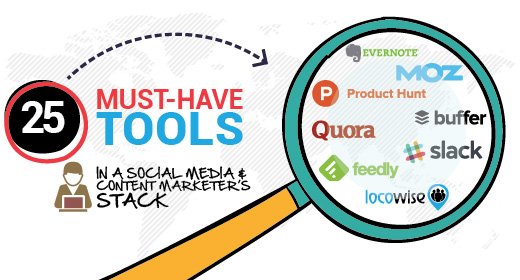
Feedly helps us follow our favourite blogs and get ideas for content to cover.
Feedly allows us to subscribe to a variety of websites and automatically get updates on all the new content they publish. It keeps us up to date on all the news and updates from the industry but also gives us ideas for things that we can cover in our content too.
Buffer helps us schedule and share the content on our social media profiles.
Buffer makes the process of scheduling a piece of content for social media platforms easy. It is easy to set our blog content to be promoted at severalpoints over a period of time and get it in front of more people.
Pocket helps us remember, organise and share content we want to read.
Pocket allows us to save content that we want to consume at a later time. It also makes it easy to share content pieces with comments and notes to the rest of the team.
Hootsuite helps us monitor the conversation in social media and use our profilers as a team.
Hootsuite allows us to work as a team while running and monitoring the same social media profiles. It is easy to set different user levels and delegate different posts and comments to individuals.
BuzzSumo helps us discover content that performs well online and become familiar with people sharing that content.
BuzzSumo excels at the organisation of all the content on the web according to its popularity in social media. When we’re brainstorming content ideas we can simply search for any keywords and phrases to find all the top shared content on that topic in any time period that we select. On top of this it also gives us the list of all the Twitter users who have shared that specific piece of content. Perfect to find out what works.
Slack helps us get rid of emails, allows us to communicate, and puts many of our activities under one app thanks to all the integrations.
Slack gets us to talk on a one-to-one basis and in groups about all the day-to-day things. It is faster and more personal than using email. We no longer send any emails internally. It also serves as our hub with several of the other tools in this list being directly integrated into Slack.
Nuzzel helps us get a quick overview of what content that people we follow share the most on social media.
The Nuzzel app works like BuzzSumo but only for our own social media profiles. Instead of scrolling down through thousands of tweets we get a quick overview of links that were shared the most by our audience in a certain period of time.
Trello helps us organise our to-do lists and prioritise tasks.
Trello is a great and simple to-do list for teams. We use it to share any ideas for features to develop or blog posts to write. It helps us discuss these, vote on them and then put them on our official to-do list. Trello also helps schedule these and integrate them with our official Slack channel too.
Quora helps us identify questions people have about social media.
The Quora website allows us to search its question database for questions relevant to social media and analytics. The obvious one is that we can connect to some potential users by answering their questions, but we can also gather information on what questions people have and what needs they want to have met. This is useful for our future product development and content creation.
Google Calendar helps remind us about activities we are to do.
Google Calendar allows us to share team calendars which can be automatically integrated with our Trello to-do lists and also sent as reminders at just the right time into our Slack channels. There is no longer an excuse for forgetting anything on your to-do list.
WordPress runs the Locowise blog and helps us display the content the way we want to.
The WordPress platform allows us to design our blog the way we want, add any plugins to implement additional features such as social media sharing and comments, and have a great home base for all our content.
Notify.ly helps us get all our social media mentions from Twitter and Facebook into a Slack channel.
Notify.ly works great with Slack. With a simple setup process we get all the brand mentions in social media directly into a Slack channel. It makes it easy to get an overview of who is talking about us, what they are talking about and when necessary to also get in touch with the person.
Evernote helps us collect all the ideas and drafts for future blog content.
The Evernote tool enables us to put all the materials we have for future content such as pictures, pasted notes, drawings, audio memos in one place. The interface is nice for organising content so it’s very easy to look something up when it is time to create a new piece of content.
Google Docs helps us write and internally distribute our blog content.
The application allows us to replace Microsoft Word and write, read and share our content directly in our browsers. It is faster, easier and has a simple Slack integration too.
Simplenote helps us take notes quickly when on the go.
It is similar to Evernote however Simplenote dis very simplified. You can only enter text but you can do it much faster. If you’re on the go and want to note down some new ideas or things you’ve heard the Simplenote app opens immediately and saves everything quickly.
Google Analytics helps us understand what content works and what visitors spend their time on.
Google Analytics allows us to see the statistics of our website and blog visitors. We get answers to questions such as what content works, what doesn’t work so well, who is our audience and where do they discover our content? All this data helps us make better decisions and create even stronger content in the future.
Headline Analyzer helps us create more attention grabbing blog post headlines.
Headline Analyzer gives us directions regarding the creation of better headlines. Headlines after all are what the majority of people will see in their social feeds, and in many instances it is the headline that will determine if they will click to read more. If the headline is not attention grabbing many people won’t even see the great content we have created.
FullStory helps us identify where and how to improve the user experience on our site by looking at how current visitors use it.
FullStory allows us to analyse how visitors view and experience our website. It is a recording of the browser of the user and you can see any movement of the mouse, any scroll and any other action the user takes. It gives us insights into what areas of the user experience can be improved.
Photoshop helps us create all the imagery and graphs that you see in our blog content.
One of the best known image creation programs, Photoshop allows us to create imagery that helps us tell better stories from our data and that provides a better user experience. All the imagery also gets our content in front of more people as sometimes people prefer to share and embed visual content versus text only content.
IFTTT helps us connect the apps that we use and automate some of the actions.
The application helps us to be more productive by negating the need to physically action certain app connections and to-dos. It automates the process of doing certain actions and also integrates with Slack.
MailChimp helps us segment our database and send smarter mailers.
MailChimp allows us to send action-triggered emails such as those only to people who have previously shown interest in a certain topic. There is no longer a need to send generic and impersonal emails to the whole database.
Microsoft Excel helps us make sense of all the data we gather and extract relevant data to use in studies for our blog posts.
Microsoft Excel enables us to share our data and numbers internally which we then segment and analyse. This process make it easy to extract data for studies such as growth, engagement and reach studies on Facebook and Instagram.
Moz helps us learn more about our standings with search engines such as keywords we rank for and links we receive.
Moz teaches us more about how many websites have linked to our content and products. It also allows us to see how much visibility we get in the search engine results.
Product Hunt helps us discover even more tools that can improve the way we work.
Product Hunt helps us discover more tools by having the ProductHunt community vote and surface the top tools only. Some of the tools in this list were discovered on Product Hunt and it is a great site to check regularly for even more great ideas.
Last but not least Locowise can help you put all your social media analytics and insights in one place.
Locowise allows us to create customised dashboards with metrics that matter to us from social media platforms that we care about and want to monitor. There is no longer any need to login to several different insight tools.

